Photos of Pterosaurs: Flight in the Age of Dinosaurs
Pterosaur Egg

This cast of a pterosaur egg shows a fossilized pterosaur curled up, with its wings wrapped around its body. The skeleton is nearly complete, indicating that the young pterosaur was almost ready to come out of its shell. Its wing bones are long and fairly solid, so it would probably have been able to fly soon after hatching. [Read full story]
Scaphognathus Fossil

Scaphognathus was a pterosaur that lived in what is now Germany during the Late Jurassic about 150 million years ago. This fossil preserves an incomplete adult with a 3-foot wingspan (0.9 m) and was recovered from the Solnhofen strata near Eichstätt, Germany. [Read full story]
Dawndraco kanzai

This species of pterosaur, Dawndraco kanzai, was one of the largest pterosaurs ever to take to the skies toward the end of the era of flying reptiles, between 90 and 66 million years ago. This long-winged, short-tailed, toothless creature was a close relative of Pteranodon longiceps. During their heyday, Dawndraco, Pteranodon and their oversized cousins soared over a seaway that covered the American Great Plains. [Read full story]
Sordes pilosus

This pterosaur lived about 155 million years ago near a lake in what is now southern Kazakhstan where it likely dined on fish and other small prey. Its broad wings stretched from its wing bones to its ankles, and another flap of skin connected its legs, which it may have pumped during flight. Some fossils show that Sordes pilosus kept warm with a thick coat of fibers similar to fur. [Read full story]
Nyctosaurus skull
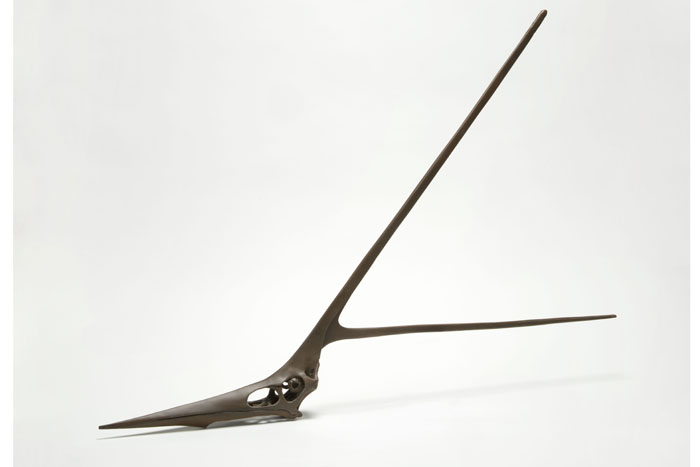
Nyctosaurus, a pterosaur that lived 84 million years ago, had two long, thin bones sticking out of its head. These narrow rods were three times longer than the animal’s head and roughly as long as its entire body. Most scientists think these bony prongs were probably connected by soft tissue. Others think they could have remained bare, like deer antlers. [Read full story]
Thalassodromeus skull
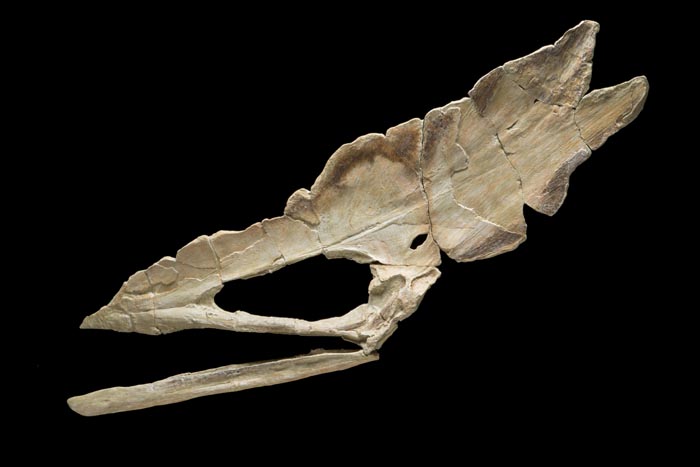
The huge, flat crest of Thalassodromeus sethi contains a network of branching channels. These visible grooves suggest that during life, a network of blood vessels covered the crest below the skin. These channels might have sent warm blood to the crest’s surface, cooling the animal as it flew. [Read full story]
Thalassodromeus

Thalassodromeus sethi had a crest three times larger than the entire rest of its skull, when seen from the side. Indeed, it had the largest crest of any known vertebrate. This large pterosaur species, with a wingspan of 14 feet, lived around 110 million years ago near a lagoon in what is now Brazil. [Read full story]
Get the world’s most fascinating discoveries delivered straight to your inbox.
Dark Wing
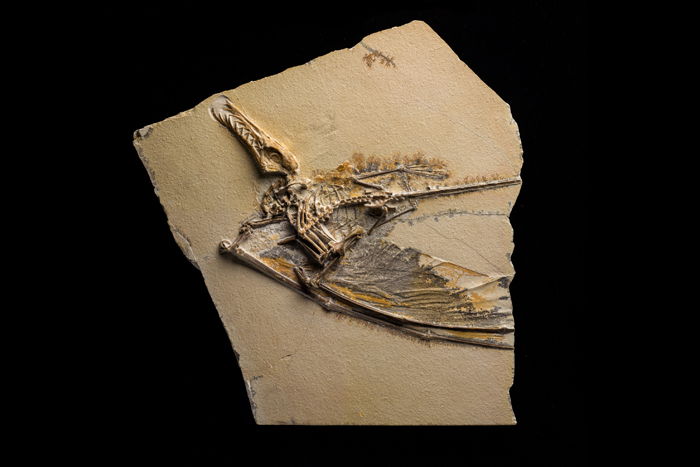
In this remarkable Rhamphorhynchus muensteri fossil, discovered in Germany in 2001, the wing tissues are so well preserved that scientists have been able to see fine details in their structure. Under ultraviolet light, researchers detected layers of skin threaded with blood vessels, muscles and long fibers that stiffened the wing. Because of the shadowy color of the wing membrane, paleontologists call this fossil Dark Wing. [Read full story]
Rhamphorhynchus muensteri
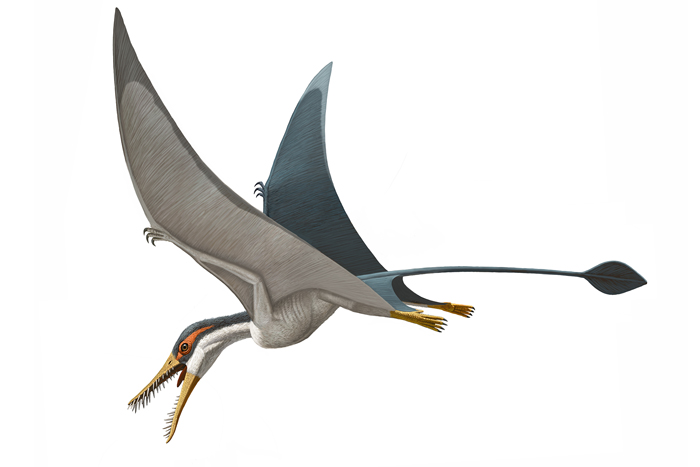
Rhamphorhynchus muensteri is a dagger-toothed pterosaur from the Late Jurassic (about 150 million years ago). It had a long tail, with a stiff flap of skin called a vane at the end that stabilized flight. Some scientists think this membrane faced sideways, like a fish tail, and helped prevent rocking from side to side. Others think it lay flat, like a paddle, and helped the flying pterosaur control its elevation. [Read full story]
Exhibition Entrance
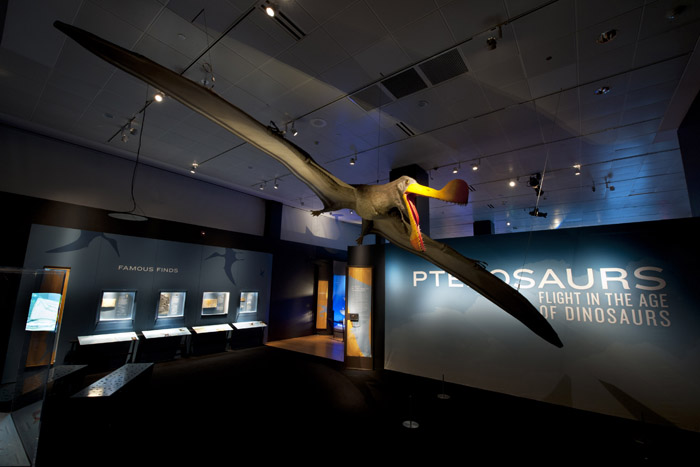
The colossal Tropeognathus mesembrinus model, with a wingspan of more than 25 feet, soars overhead at the entrance to the Pterosaurs: Flight in the Age of Dinosaurs exhibition. [Read full story]



